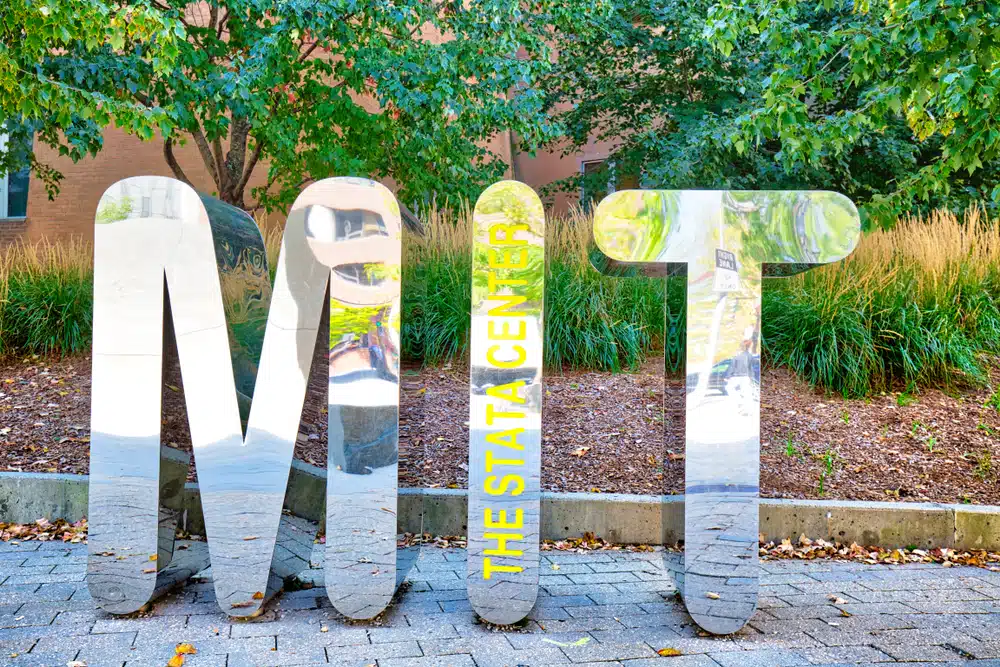MIT Likely Letter: What to Know
When students are planning on applying to top colleges and universities in the world, they often look for unique signs and indications that they will be getting into those schools. The truth is that there are very few schools that offer those kinds of hints prior to an official letter of acceptance.
One of those early indications that do exist is known as likely letters. Likely letters, which are typically sent out to an incredibly small percentage of students, if at all, are basically a heads up to students that they will eventually be getting into a school.
In fact, getting a likely letter is far less common than even getting an acceptance letter from these most competitive schools, and it is not uncommon for less than 1.0 percent of students to receive such a letter.
But what is likely and do students who apply to MIT (Massachusetts Institute of Technology) ever even get an MIT likely letter?
At AdmissionSight, we make it a top priority for our entire team to have the knowledge and skills necessary to help the high school students that we work with every application cycle get into the schools of their dreams. Our knowledge of the application process at schools like MIT helps us lead students in the right direction when it comes to crafting their applications to make them as attractive as possible in the eyes of the admissions committee at the school.
Our knowledge about what kind of student can get a likely letter from MIT – and many more important aspects of the application process at MIT – has helped us lead many of our students in the right direction that ultimately lead to them getting an official letter of acceptance from the school!
In fact, 75 percent of the students that we work with in each application cycle end up getting into either Ivy League schools like Harvard, Princeton or Yale or top 10 schools that are not in the Ivy League like MIT, Stanford or CalTech.
When you consider the fact that all of the aforementioned schools had acceptance rates that are below 5.0 percent during the most recent 2021-22 application cycle, we feel quite confident that the work that we do and the tools and strategies that we offer help the students we work with in immense and multi-faceted ways.
So, if you are interested in learning more about MIT or want to answer the question, “Does MIT send likely letters?” then you have absolutely come to the right place! Let’s get started on breaking down the answers to those questions and much more together,
What are likely letters?
Before we go into regarding Harvard likely letters specifically, we want to quickly break down what a likely letter is.
Essentially, highly selective universities and colleges will sometimes write what is known as “likely letters” (also sometimes known as “love letters”) to elite applicants who have applied to the school. These letters are especially popular for students who are being considered to receive merit-based or athletic financial aid such as a scholarship or a full ride.
Essentially, these letters are used to give these top-tier applicants a “heads up” or sorts that they will likely be admitted to the school before the official decision notifications go out in March and April. The letters are not only used to flatter the applicant but they are also used to start planning for their enrollment at the school!
So, the name really says it all when it comes to likely letters. These letters – which tend to be sent to students directly from the Dean of Undergraduate Admissions – serve as an unofficial (but pretty close to official) heads up that an offer of admissions is going to come in the mail sooner rather than later. It’s a major moment for students who are amongst the few to receive one!
What is MIT’s acceptance rate?
When it comes to accepting letters from any school, it is important to keep in mind that the only schools that are known to send these kinds of notifications tend to be private schools and they also tend to be amongst the most prestigious and selective schools in the country.
To give you an idea of just how competitive it is to get into MIT at all, take a look at the acceptance rate statistics from the 2021-22 application cycle.
In March 2020, it was announced that out of 33,796 total applicants, just 1,337 students were admitted to the school. That marked an overall 3.96 percent overall acceptance rate. The total pool of students that applied to the school marked a 2.0 percent increase from the previous year. The Early Action acceptance rate for the school was approximately 4.7 percent, so a bit higher than the overall acceptance rate.
The acceptance rate from the 2021-22 application cycle marked a slight decrease from the previous application cycle (4.03 percent). Both the acceptance rate in 2020-21 and 2021-22 marked significant reductions from what had been the typical percentage in the years prior to the start of the COVID-19 pandemic.
In those years, the acceptance rate was around 7.0 percent. That trend of lowering acceptance rates has been seen at the vast majority of elite schools in the United States over the last couple of years.
Does MIT send likely letters?
If you’re here to learn about whether or not MIT even sends out likely letters, the simple answer to this question is no. Through AdmissionSight’s direct experience with having students apply to MIT, as well as through the research we’ve done on the subject, we can’t find any proof that MIT does in fact send out likely letters.
The truth is that, if you know much about how MIT operates as a learning institution, this shouldn’t come as so much of a shock. Despite the fact that MIT is considered to be just as competitive and prestigious as schools like Harvard, Princeton and Yale, there is a bit less commitment on MIT’s side when it comes to creating an “elite” experience for students who get in and attend the school.
Students who end up attending MIT tend to have a more humble outlook on attending this school compared to students who end up at Ivy League schools. That doesn’t have to be seen as either a positive or a negative, necessarily. In the end, it comes down to what kind of college experience you want as an undergraduate student.
When it comes to why MIT doesn’t offer likely letters, an MIT alum (Class of 2000) broke down the reason in a really easy to understand and nuanced way. One would expect nothing less from a graduate of this incredible institution.
Here’s what McGann had to say:
“One reason why likely letters aren’t a part of our process is that our process differs from many of the schools who employ them,” he said. “At MIT, we read and summarize the applications over the course of a number of weeks, and we don’t admit anyone until all of the reading is done and we come together as a committee. At some other schools, some admitting is done on the spot — when the admissions officer sees a “clear admit” come across his or her desk, they can admit the student right then and there. The problem is that admissions offers for these schools won’t be sent out for a long time, sometimes months.
A regular action applicant at one school might be reviewed and admitted in the beginning of January, but the formal decision might not go out until April. So, in a sense, I can understand the urge to not have people wait. In the WSJ article, Dartmouth Dean of Admissions Karl Furstenberg is quoted as saying, “We do these letters to try to introduce some ‘humanity’ into the pressured admissions process.”
“Another reason we don’t have any early notification is that IT does its notification pretty early anyway. Last year, I believe our regular action letters were mailed on Pi Day. I don’t know when we’ll mail this year yet, but it will be sometime in the middle of March, probably a good two weeks before the Ivies. I think it’s a good thing that we can finish our admissions decisions in mid-March to give students more time before the May 1 reply deadline to be able to make their college decision.”
What does a typical likely letter say?
While you now know that you won’t be receiving an MIT likely letter under any circumstances because the school does not send them to even the most impressive students, chances are pretty good that you will be applying to one or more schools that are known to send likely letters.
After all, all eight Ivy League schools are known to send likely letters to students every year!
So, if you are curious what a likely letter may say, take a look at a quick example that a likely letter could very well look like.
“Greetings from the Office of Admissions at Elite University!
I am writing to you today to update you on your application and let you know how impressed my colleagues and I have been with your many accomplishments, both academic and otherwise.
We feel that your interests and talents, as well as your goals, are a fantastic match for Elite University. While we will not be sending out official offers just yet, we thought you would like to know that you are likely to be admitted when the time comes. Congratulations!”
Keep in mind, that this is just a simple example and likely letters do tend to differ somewhat from one school to the next. Certain likely letters may even include information in terms of financial aid when an official letter can be expected to be received, and more.
Does a likely letter guarantee admission?
This is a really important question for anyone who received a likely letter from any school to know the answer to. Typically, a likely letter can be considered just as good as an official likely letter for admission. However, there are some really important caveats that students who do receive the very rare likely letter to keep in mind.
The most important caveat is that students who receive likely letters still need to make sure that they are keeping up with their grades, their extracurriculars, and staying out of trouble! Schools do not want to see a student who receives a likely letter immediately start performing poorly in classes or abandoning their extracurricular activities.
Of course, the worst way to ruin a likely letter and end up not getting into that school is by getting in trouble with the law.
With that in mind, it is important to know that even if you receive an official letter of admission from a school, if your grades start suffering or the school finds something that seems to be a cause for concern that occurred after you were accepted, your acceptance can be rescinded. It is very important for students who get into their dream school to not fall victim to “Senioritis” as it is often called.
When it comes to MIT specifically, the school does request mid-year and final grade reports from students that are accepted. So, whether you receive a likely letter from a school like Harvard or Yale or a letter of official admission from MIT, make sure to keep those grades up and stay out of trouble!
How to get a likely letter?
At this point, you may be curious about what it actually takes to receive a likely letter from one of the best schools in the country. The truth is that it requires a fairly unique criteria no matter the school.
Because MIT does not have a list of criteria at all when it comes to likely letters, because it does not send likely letters to even the most qualified students, we thought we would use Princeton University as a good example to go over what admissions officers at that incredible school consider when they are thinking about possibly sending out a likely letter to a prospective student.
Here are the three major bits of criteria that Princeton looks for when determining if a student should be sent a likely letter. Remember, these criteria are specific to Princeton, and yet they do offer a fair bit of insight into what other schools that send out likely letters as well look for:
- They must be such strong candidates that they have almost certainly applied to other similarly competitive schools compared to Yale such as Harvard, Stanford, etc.
- It must be virtually certain that one or all of the other most competitive schools that they applied to will accept them
- Finally, Princeton admissions officers must be virtually certain that they will offer a spot of admission to the school even without seeing the entire pool of applicants from that year.
One final criteria that we know schools look for when it comes to sending out likely letters is whether or not a student comes from a unique background or set of circumstances that would lead them to need or benefiting from having more time to prepare for their undergraduate education.
This typically includes students who come from a remote part of the country or world that may need the extra time to prepare for the big move, or it may come from a student who is the first in their family to attend a four-year college or university.
These students may need the extra months to plan and prepare for their enrollment at the school they’ve been accepted to, so the school may feel inclined to offer them that extra heads up – as well as that extra chance to celebrate – by sending them a likely letter!
When do students receive likely letters?
If you’re curious about likely letters in general, students tend to receive these letters between October 1st and March 15th. This range of dates is actually one of the primary reasons why MIT does not send out likely letters at all. At MIT, all students know of their admissions status by March 14th at the latest. That relatively early MIT acceptance date is thought to be a major contributing factor as to why it doesn’t send out likely letters.
Get a likely letter from an elite school
Though MIT specifically does not send out likely letters, a large number of the most prestigious schools in the United States absolutely do. If you are curious to learn more about what it takes to receive a likely letter or simply get into one of the most competitive and prestigious schools in the United States, contact us today at AdmissionSight to schedule a free consultation.










































